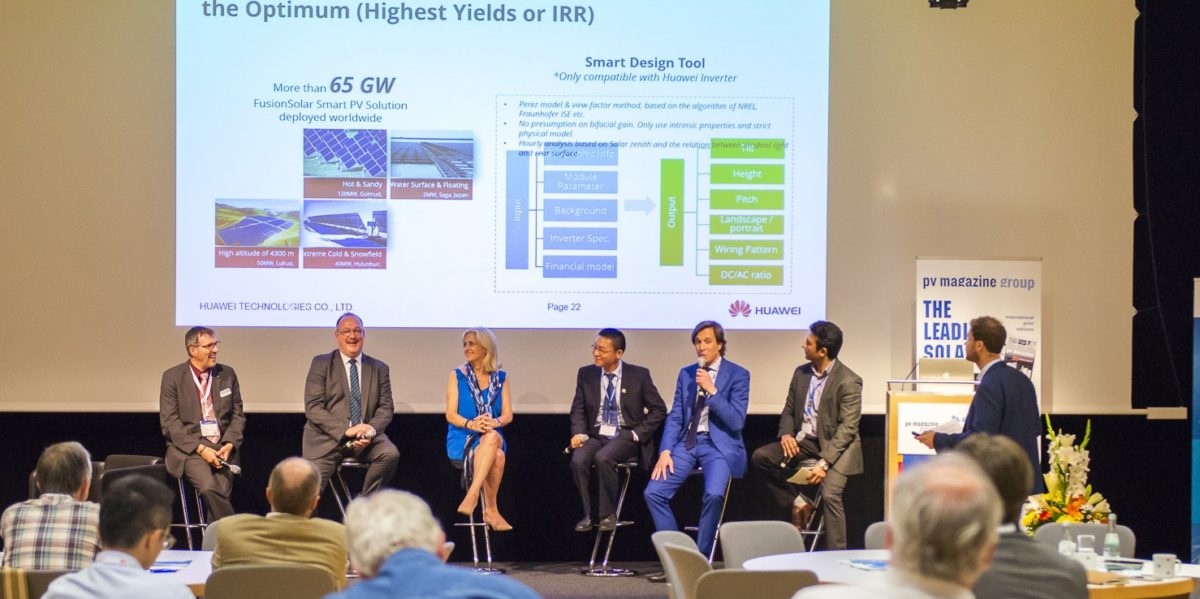U.S.-based solar tracking system company, Array Technologies Inc. announced the appointment of Jim Fusaro as its new CEO last week during Intersolar Europe in Munich. Fusaro replaces company founder, Ron Corio – who has served as its CEO since the beginning. Corio will stay on as a part of the senior leadership team with Array, focusing more on product development.
New CEO Fusaro's focus will be on the company's ongoing global expansion. Fusaro, a relative newcomer to solar, has more than 30 years of senior executive experience in technology-related multinational corporations under his belt, including at Motorola, Amkor Technology, Avnet, and global conglomerate Honeywell.
“Ron has been successfully leading the company for 29 years,” Array's VP International told pv magazine during Intersolar. “As the company grows, Ron wants to dedicate his time to the development of the product, ensuring that our technology continues to lead the industry. The company originally focused on technology and Australia and the U.S. However, now we have expanded into a global company penetrating many markets.
“To continue to deliver the best-of-the-market product, Array will focus on business operations, technology development, and innovation. Jim's experience at companies such as Honeywell or Motorola is going to lend extremely valuable expertise and leadership.”
Expansion
Alberte commented on the possibility of an initial public offering (IPO), on the back of the appointment of the new CEO:”I think it is not the moment to talk about that. Right now, we are focused on the expansion of the company. We are already a leader in the industry, and our shareholders will be doing what is best for the company.”
In terms of which markets the company is focussing on, Alberte explained, “Once [irradiation at] the location of your plant is above 1,500 kWh per square meter, and year of irradiation, it is a no-brainer. You have to use a reliable tracker in these favorable solar conditions. Approximately 80% of global PV installations are ideal for deploying trackers.
Popular content
“In Europe, countries like Italy, Greece, Spain, and the south of France have excellent conditions for tracking. Globally, we are working in the MENA region, Latin America and Europe to deploy our technologies to these growing markets at the same time we keep our leading position in the U.S. and Australia.”
With bifacial technology one of the hot themes during Intersolar, and at the Future PV event, Alberte said Array is sourcing modules for a test array it is currently developing, in close partnership with Sandia National Labs, a renowned solar research institute located in New Mexico USA.
“We have designed our trackers over the years, not only meeting short-term needs but also looking at what is going to come in the more distant future,” said Alberte. “Because of that, we have already designed our tracker to be compatible with bifacial modules. We now have the tracker architecture with the cleanest backside, as we are not using any rails. We have been working in close cooperation with panel manufacturers and are continuing to optimize the product as more research is performed.
“Bifacial optimization is more complicated than one might think, because there are around four or five major factors, like the height of the tracker and albedo of the surroundings that we need to combine to find the right configuration. We have also been working together with Sandia National Labs in the U.S. and will share more in the coming months,” Alberte said.
He further explained, “We have several projects with bifacial modules that I, unfortunately, cannot disclose the names of currently. We also have partnerships with existing clients who have plants using regular panels where we are installing several strings of bifacial panels to gather real data for the production output those modules give.”
These plants, Alberte revealed to pv magazine, are located in Asia, the U.S. and soon in South America, and cover different climatic and geographic conditions, in order to be able to gather data and optimize the bifacial test array set-up.
This content is protected by copyright and may not be reused. If you want to cooperate with us and would like to reuse some of our content, please contact: editors@pv-magazine.com.



By submitting this form you agree to pv magazine using your data for the purposes of publishing your comment.
Your personal data will only be disclosed or otherwise transmitted to third parties for the purposes of spam filtering or if this is necessary for technical maintenance of the website. Any other transfer to third parties will not take place unless this is justified on the basis of applicable data protection regulations or if pv magazine is legally obliged to do so.
You may revoke this consent at any time with effect for the future, in which case your personal data will be deleted immediately. Otherwise, your data will be deleted if pv magazine has processed your request or the purpose of data storage is fulfilled.
Further information on data privacy can be found in our Data Protection Policy.